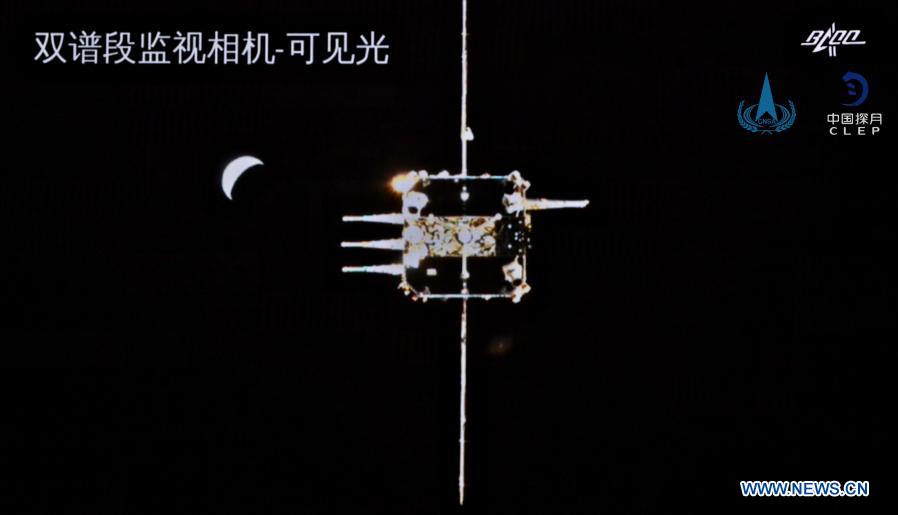
For SpaceUpClose.com & RocketSTEM
CAPE CANAVERAL, FL – China’s daring Chang’e-5 moon probe is now on its way back to Earth with the first ever pristine samples of lunar soil and rocks gathered by a Chinese lunar lander and is expected to touchdown with a landing in Inner Mongolia, in northern China on Wednesday, Dec 16 – says the China National Space Administration (CNSA).
After blastoff from the Moon in the ascent vehicle component of China’s bold and ambitious Chang’e-5 moon probe with up to 2 kg of lunar surface samples collected by the Chinese lunar lander, the ascender successfully rendezvoused and docked with the orbiter-returner combination in lunar orbit at 5:42 a.m. (Beijing Time) on Sunday, Dec. 6, 4:42 p.m. EST Sat. Dec. 5, (2142 GMT).
The sample capsule transfer from the ascender to the returner vehicle was completed at 5:12 p.m. EST Dec. 5 (2212 GMT), Sunday, Dec. 6 Beijing time.
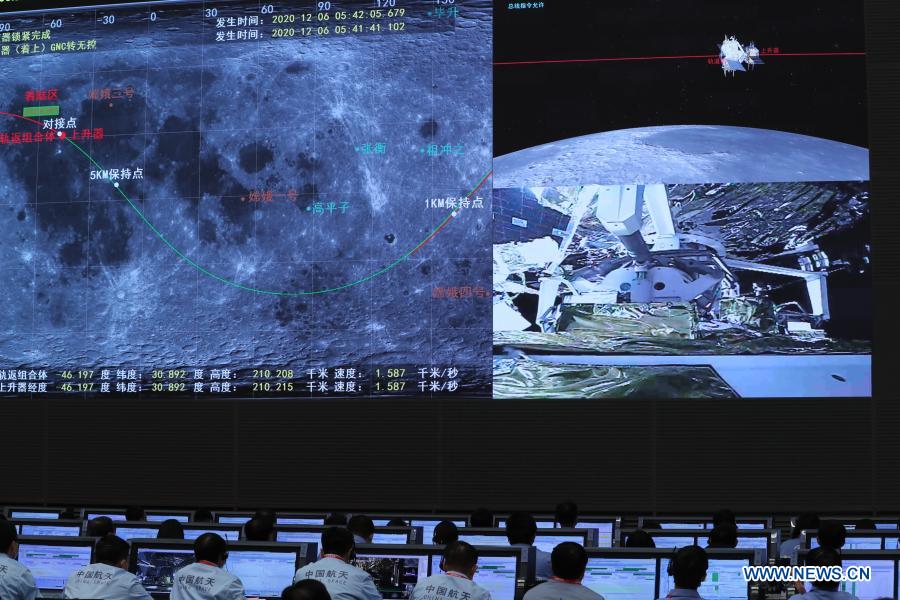
This marks the first time two Chinese spacecraft have carried out rendezvous and docking in lunar orbit and the first ever unmanned lunar orbit link and any beyond Earth in fact. Both are solar powered.
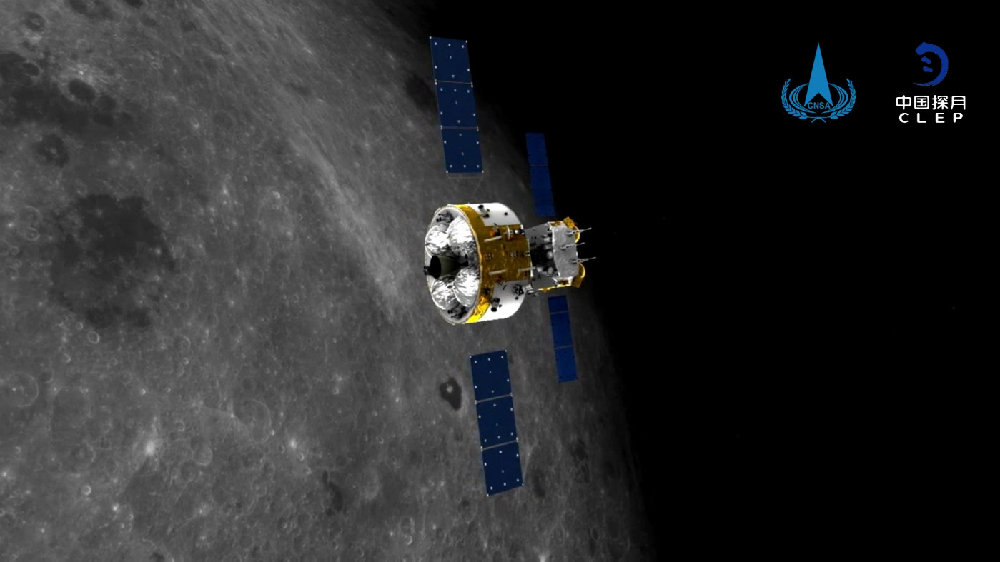
During NASA’s Apollo moon landing program, similar rendezvous and docking maneuvers were carried out with astronauts on both vehicles – the lunar and command modules (LM and CM).
The ascender vehicle had blasted off from Earths nearest neighbor on Dec. 3 to meet up with the orbiting return vehicle and transfer the return capsule to the return vehicle and then complete the first lunar sample return mission in over 4 decades – and the first ever for China.
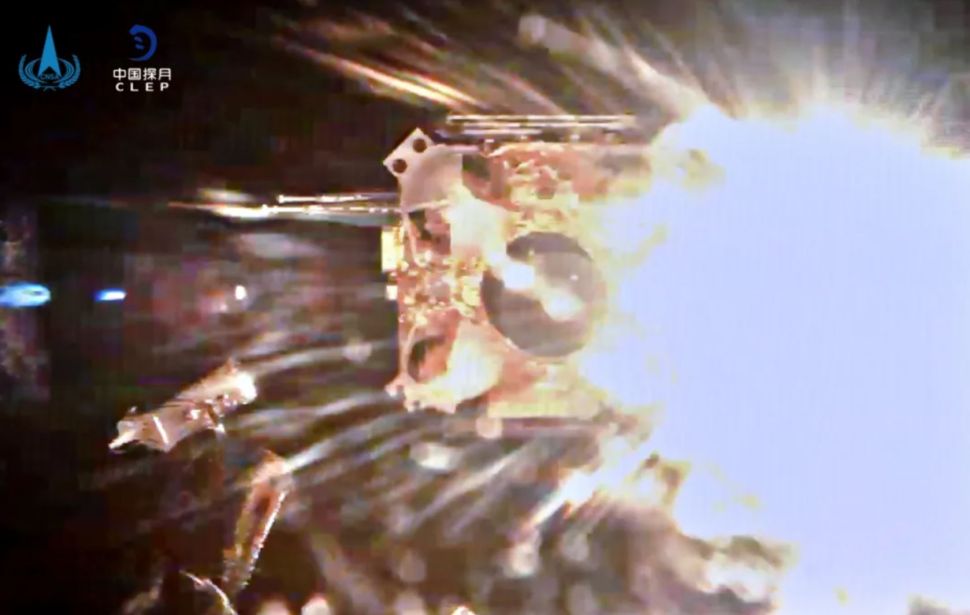
“After the samples were collected and sealed, the ascender of Chang’e-5 took off from the lunar surface on Dec. 3,” said CNSA.
“The samples collected on the moon have been transferred from the ascender to the returner.”
The Change’5 ascender vehicle was then jettisoned at 11:35 p.m. EST Saturday (0435 GMT Sunday) and intentionally crashed into the moon on Dec. 7.
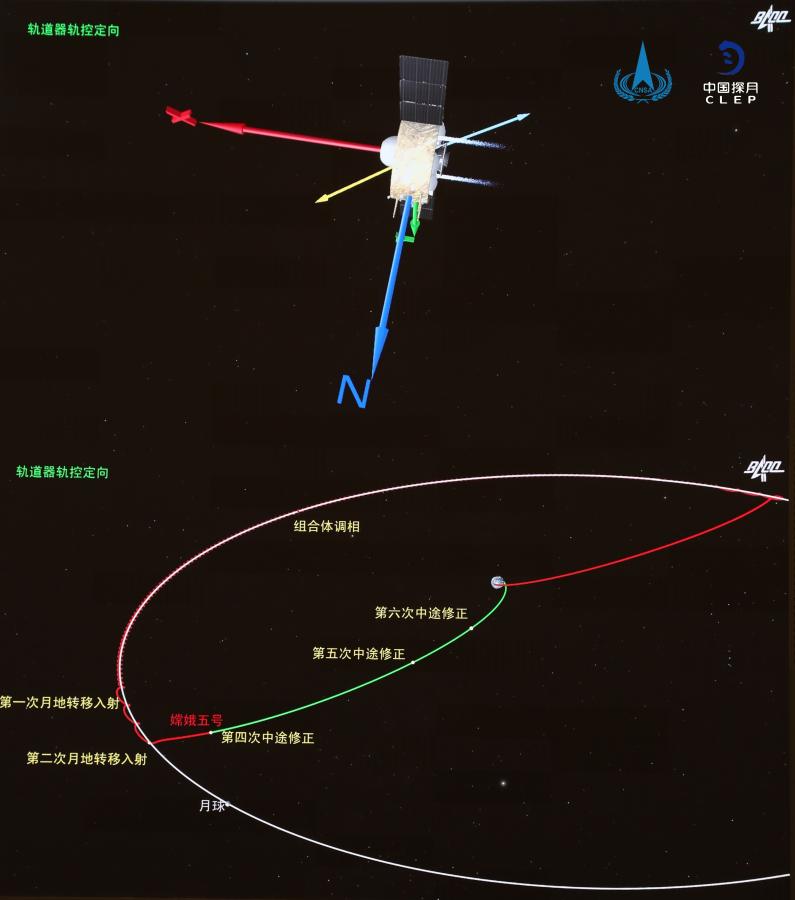
The orbiter-returner combination then entered the moon-Earth transfer orbit on Sunday, Dec 13, after waiting in lunar orbit for the right time to begin the return to earth.
The probe began its orbit raising for the return to Earth last weekend by performing a final departure maneuver at 8:51 p.m. EST Saturday (0151 GMT Sunday) to head for Earth, according to the China National Space Administration.
The departure maneuver lasted 22-minute “with four small thrusters provided the impulse necessary for the Chang’e 5 return craft to break free of the moon’s gravity.”
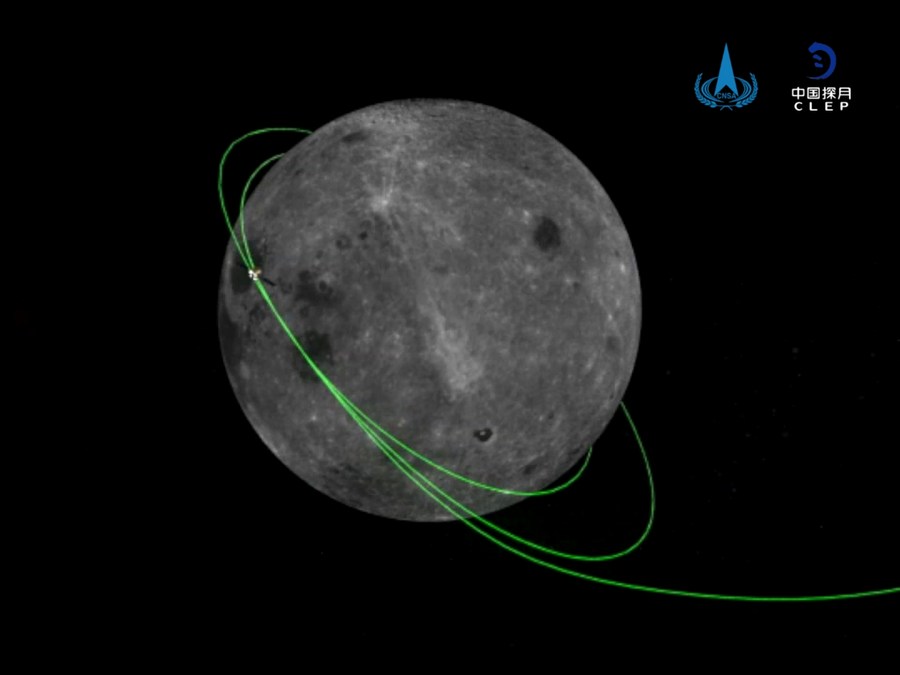
Chang’e-5 probe completed its first orbital correction en route to Earth, on Monday, Dec. 14
The orbital correction was conducted at 11:13 a.m. (Beijing Time) when the two 25N engines on the orbiter-returner combination were operational for about 28 seconds, said CNSA.
According to Spaceflight Now “Chinese officials have not disclosed the exact landing time, but public notices directing pilots to steer clear of the mission’s recovery zone are active from 12:32 p.m. until 1:07 p.m. EST (1732-1807 GMT) — in the middle of the night in the remote landing area.”
Teams have been practicing the recovery with helicopters and recovery vehicle which will occur in challenging weather conditions
“To meet the challenges brought by harsh weather, heavy snow, the small size of the return capsule and the special returning method, the search and retrieval team in the landing site has conducted several drills to test its night-time searching abilities and equipment performance,” reported China’s official Xinhua news agency.
“The return capsule of Chang’e-5 probe is only one-seventh the size of the return capsule of China’s manned spaceship, however, its landing area is 16 times larger, adding difficulties to the search mission.”
“According to Bian Hancheng from the search team, the probe on the Chang’e-5 return capsule will adopt a skip reentry method mimicking a skipping stone, which will make it difficult to control and result in a particularly large retrieval area.”
The Change’5 mission began on Nov. 23 when the Long March 5 rocket successfully hurled the 8200 kg Change’5 moon mission on a fast paced 23 day long mission on China’s first ever mission to snatch lunar regolith from the Moon’s surface and send it back to eagerly awaiting scientists back on Earth landing in Inner Mongolia, China.
The Long March 5 carrier rocket lifted off at 3:30 p.m. EST (2030 GMT) Monday, Nov 23 (4:30 a.m. Nov. 24 Beijing Time) from the Wenchang Space Launch Center on Hainan Island, China on behalf of the Chinese National Space Administration (CNSA).
It achieved orbit around the Moon, Saturday, Nov. 28.
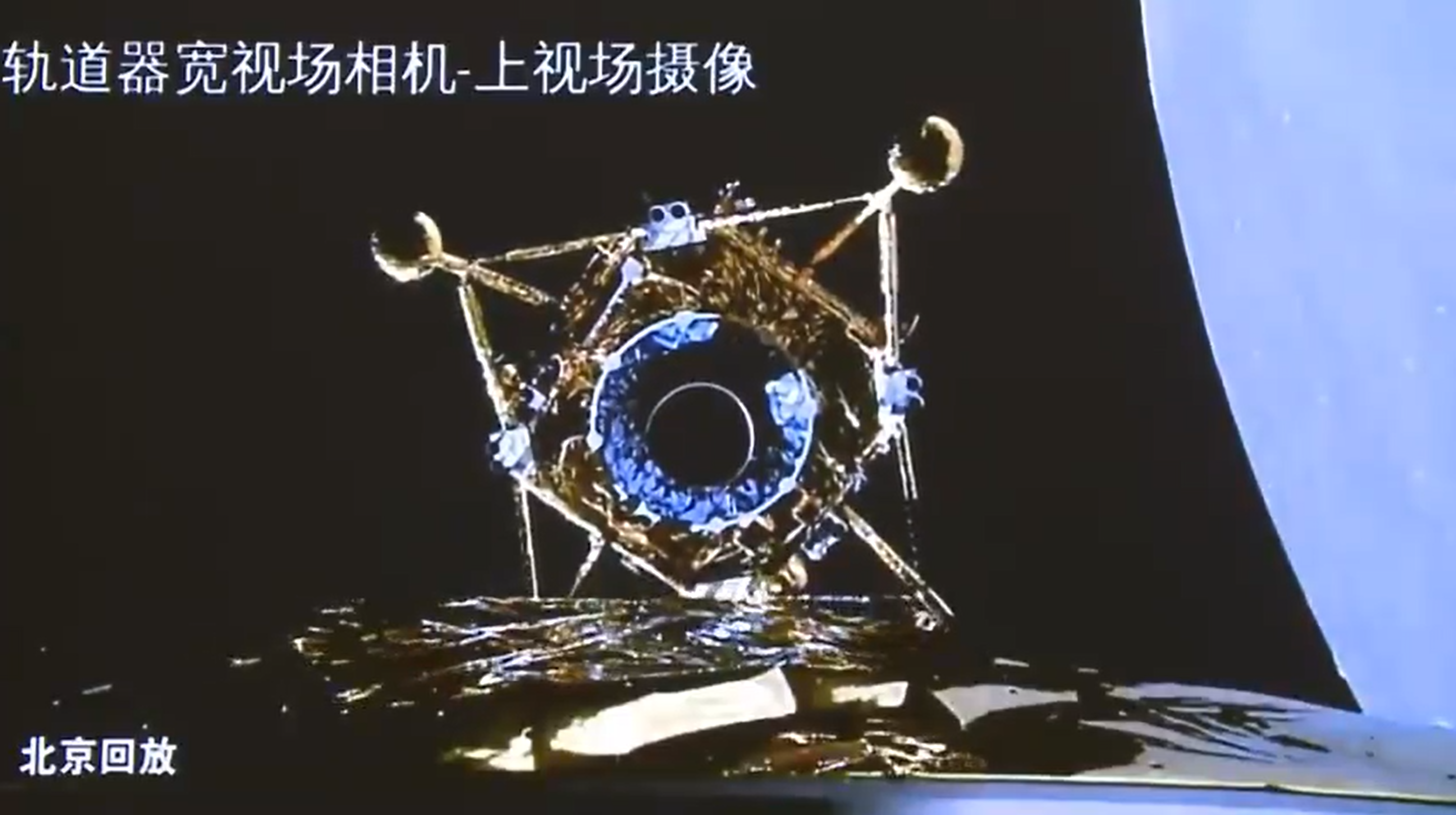
The precision guided rocket assisted lunar touchdown of the Chang’e-5 lander-ascender spacecraft combination occurred as planned at 10:11 a.m. EST (1511 GMT) 11:11 p.m . Beijing time Tuesday, Dec. 1, on the Mons Rümker region of Oceanus Procellarum or the Ocean of Storms, on a smooth volcanic plane, according to CNSA.
During the landing process, the cameras aboard the lander took images of the landing area.
Several hours post touchdown the lander transmitted a beautiful panoramic image from the lunar landing site on the surface from the Mons Rümker region of Oceanus Procellarum or the Ocean of Storms.
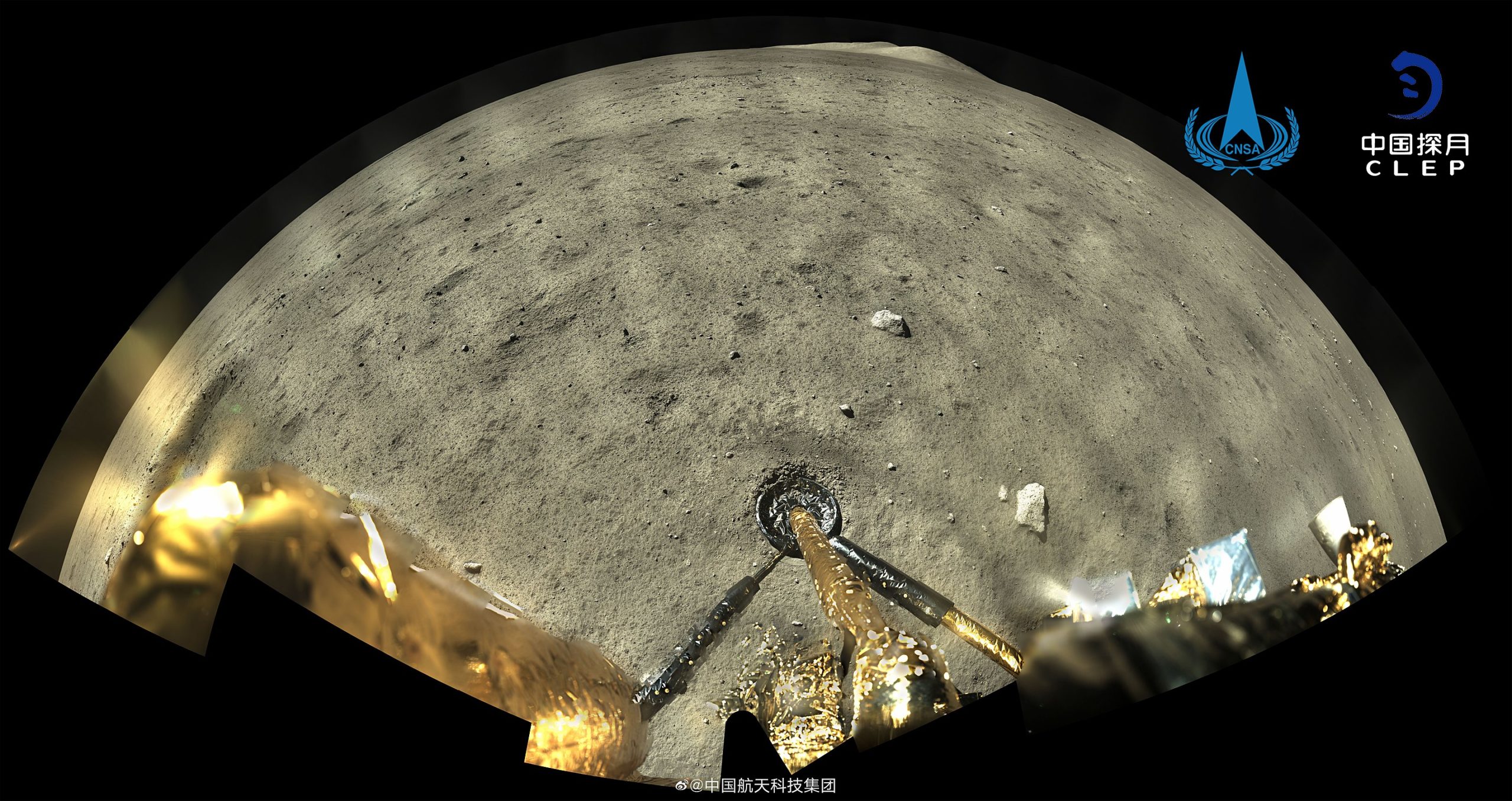
Using an onboard drill, scoop and robotic arm the solar powered robotic explorer ascender-lander component of Change’5 set to work over two days on the most challenging aspect of the mission – to collect around 2 kilograms or more of lunar dust soil and rock regolith at the landing site in a region to the north of Mons Rümker, a mountain overlooking a vast lunar mare called Oceanus Procellarum, or the Ocean of Storms, on a smooth volcanic plane on the western edge of the moon’s near side.
The goal is to return the cache of precious samples from a depth of up to 2 meters to eagerly awaiting researchers on Earth for detailed scientific analysis.
Photos released by CNSA showed the lunar surface had been dig into by the landers scoop and drill.
“It adopted two methods of moon sampling, including using drills to collect subsurface samples and grabbing samples on the surface with a robotic arm. It gathered diverse samples at different sites,” said CNSA.
China's Chang'e-5 probe completes sampling on the moon. It has adopted two methods, including using drills to collect subsurface samples and grabbing samples on the surface with a robotic arm. Diverse samples have been gathered. #LunarProbe #ChangE5 https://t.co/9LxFporp3e pic.twitter.com/N4snzNs77Q
— China Xinhua News (@XHNews) December 3, 2020
China is only the 3rd country to attempt a lunar sample return mission – following the United States and the then Soviet Union – now Russia, from Apollo manned and Luna unmanned missions in the 1960s and 1970s.
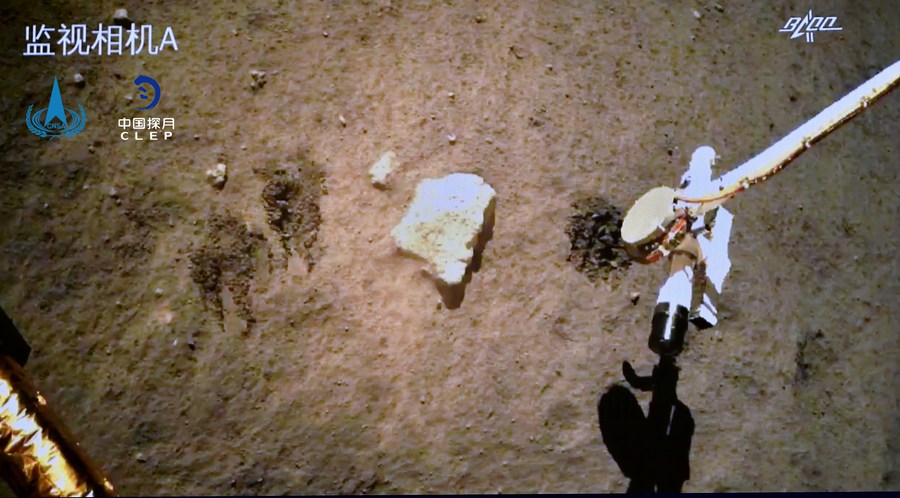
The Chang’e-5 mission is comprised of four components: an orbiter, a lander, an ascender, and an Earth return capsule.
The samples collected could be the youngest samples retrieved from the Moon so far dating to roughly 1 billion years vs 3.1 to 4.4 billion years old for the Apollo samples.
The most recent lunar sample return mission was accomplished by the Luna 24 spacecraft launched by the then Soviet Union in 1976.
To date lunar soil and rock samples were collected and returned from 6 NASA Apollo manned moon landings and 3 Russian Luna robotic missions
Chang’e 5 is equipped with a robotic arm with a sampling scoop, a coring drill, and a sample chamber that can return up to 4 kg of regolith. It also has a Panoramic Camera (PCAM), Lunar Regolith Penetrating Radar (LRPR), and a visible and near-infrared Lunar Mineralogical Spectrometer (LMS).
Chang’e-5 marks the next bold step in China three step lunar ambitions following on the Change’ 1 and 2 lunar orbiters and Change’ 3 and 4 landers and Yutu rovers on both the near and far side.
China became the first nation in history to land a robotic spacecraft on the far side of Earth’s Moon, when their robotic spacecraft named Chang’e 4 accomplished a soft touchdown Jan. 3, 2019 with the Yutu-2 moon rover.
The mosaic below by Ken Kremer and Marco Di Lorenzo shows the Yutu-1 moon rover at work on the lunar surface.

Earlier this year China has successfully launched its first fully indigenous mission to Mars – the extremely ambitious Tianwen-1 robotic mission designed to orbit, land and rove on the Red Planet – aimed at comprehensively investigating its climate, atmosphere and geology and search for signatures of water as well as snapping numerous images.
China utilized its most powerful rocket – the relatively new heavy-lift Long March 5 – to hurl the combination Tianwen-1 orbiter and lander mission to Mars.
The Chinese Tianwen-1 spacecraft lifted off atop the Long March 5 carrier rocket from the seaside Wenchang Space Launch Center in southern China’s Hainan province on July 23, at 12:41 a.m. EDT (0441 GMT; 12:41 p.m. Beijing time).
China eventually hopes to land the first Chinese people on the Moon at some point during the 2020s.
NASA seeks to return astronauts to the lunar surface under Project Artemis aiming to land the first woman and next man at the Moon’s South Pole by 2024.
Watch Ken’s continuing reports about SpaceX Crew Dragon, Starlink, Commercial Crew and Artemis and onsite for live reporting of upcoming and recent SpaceX and ULA launches including Demo-2, Starlink, X-37B, Solar Orbiter, Mars 2020 and more at the Kennedy Space Center and Cape Canaveral Space Force Station.
Stay tuned here for Ken’s continuing Earth and Planetary science and human spaceflight news: www.kenkremer.com –www.spaceupclose.com – twitter @ken_kremer – email: ken at kenkremer.com
Dr. Kremer is a research scientist and journalist based in the KSC area, active in outreach and interviewed regularly on TV and radio about space topics.
………….
Ken’s photos are for sale and he is available for lectures and outreach events
Please consider supporting Ken’s work by donating at Patreon:
https://www.patreon.com/kenkremer

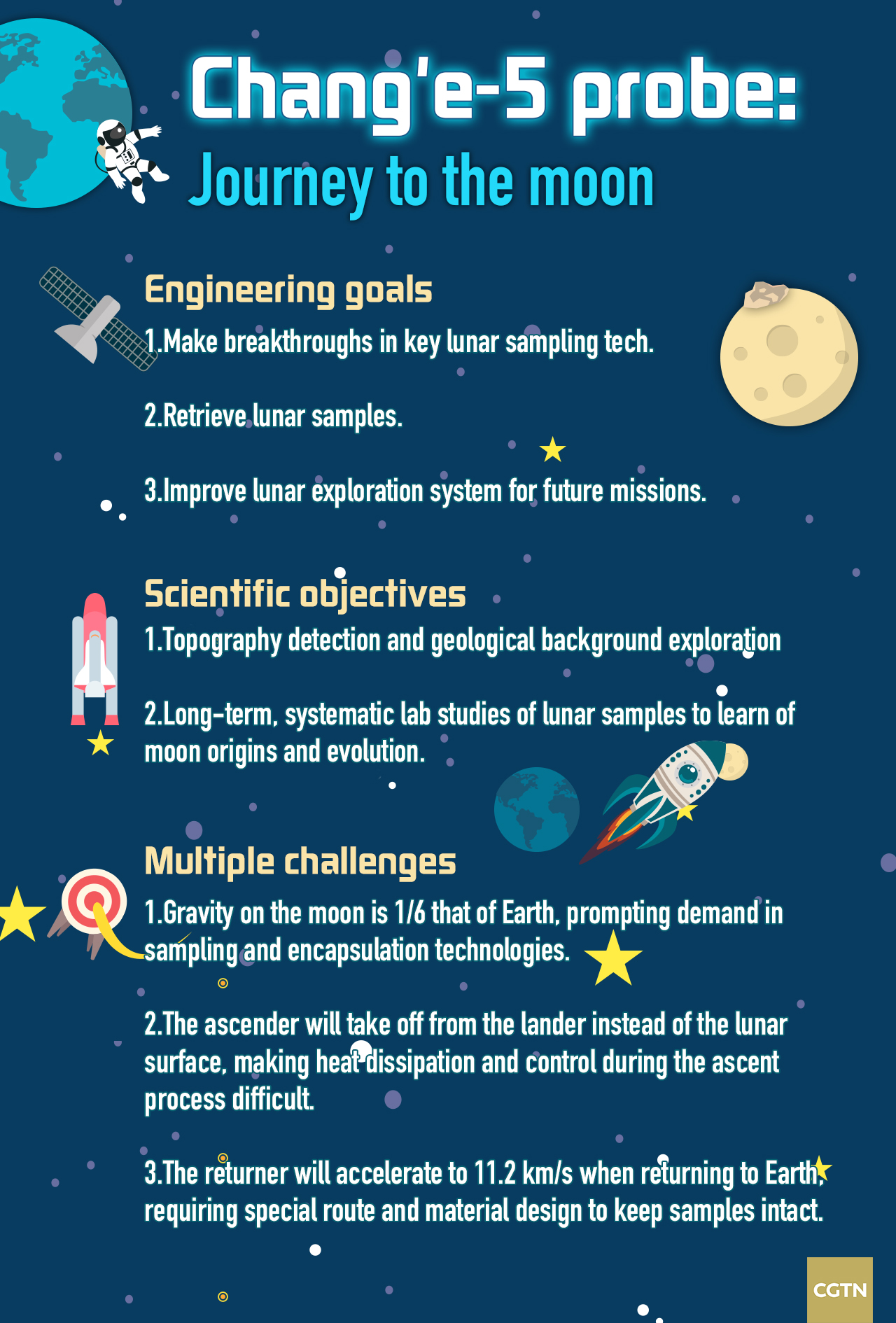
x



